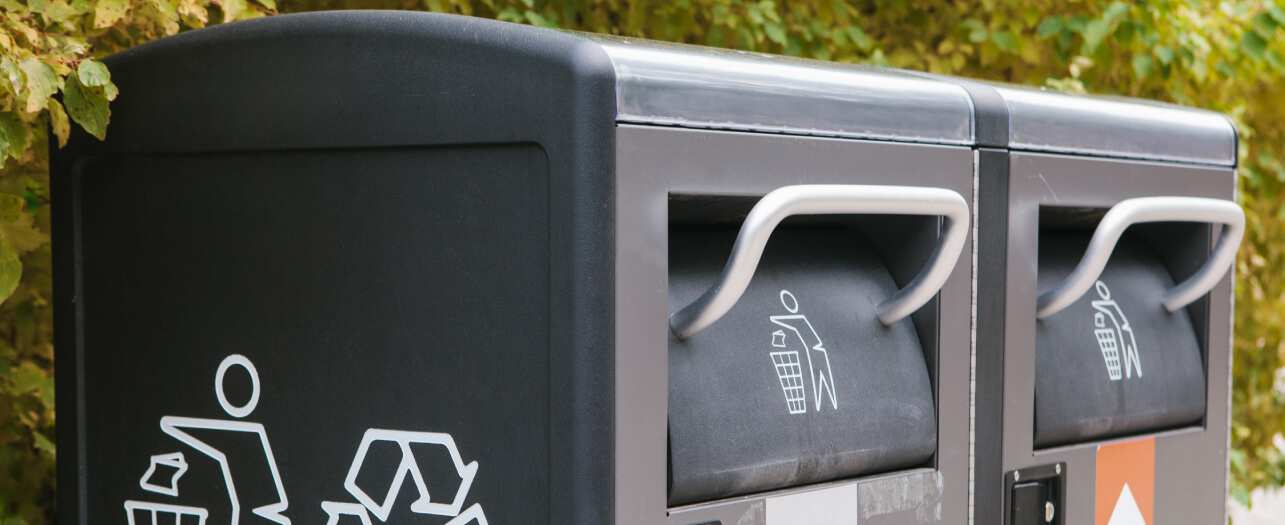Garbage collection is one of the most integral parts of waste management. One that has remained a largely manual process for centuries. As the world progressed, the waste management problem burgeoned into an issue that is a key proponent of the climate crisis. This increases the risks associated with manual garbage collection. Thankfully, the world is beginning to move forward and leveraging modern technology to deal with the waste management problem. This is where the ingenious world of smart garbage trolleys emerges.
Smart garbage trolleys are containers with wheels that are equipped with smart sensors and equipment that make the trolleys capable of handling several aspects of garbage collection and management autonomously. These trolleys significantly reduce the requirement for human resources in the waste management process and improve overall efficiency. They’re also much more effective at segregating different types of waste and enabling a circular economy. Every modern smart city is adopting smart garbage trolleys and waste management systems to improve their efficiency and their overall carbon footprint.
Smart garbage trolleys come with advanced sensors
Smart garbage trolleys are specifically designed with operations in smart cities taken into consideration. They come equipped with several advanced sensors that are connected to the IoT. These sensors arm the trolley with a lot of useful data and information for it to autonomously operate across the city and manage its contents. Smart garbage trolleys are capable of automatically segregating different types of garbage disposed within them and segregating them into different compartments based on their programming. These sensors also feed the bin data on fill levels, issuing a warning when the bin is about to overflow. The sensors are a major part of what makes smart garbage trolleys the solution to the modern waste management challenge.
Smart garbage collection trolleys provide real-time data
Another major aspect of smart trolleys is their ability to provide real-time data to waste management authorities. Their sensors track the amount of garbage being collected by these bins and provide accurate location data so that waste management authorities can gauge which neighbourhoods and districts are collecting the most waste and optimise their garbage collection routes and waste management strategies effectively. Such data also prevents manmade disasters and improper waste management hazards like landfills and toxic infections.
Significant Influence on Public Health and Hygiene
Smart garbage trolleys address hygiene concerns associated with traditional waste management methods. Equipped with automated mechanisms for waste collection, these bins minimise the requirement for manual handling of garbage, reducing the risk of exposure to harmful substances for waste management personnel. These trolleys are also made of materials that prevent the spread of infectious odours and diseases from harmful waste disposal methods.
Additionally, these bins also play a role in educating the general public about responsible waste disposal and improving overall waste management standards among common folk. Not only does this make waste management a much easier challenge for the authorities to tackle, but it also has a profound impact on overall public hygiene and awareness about the waste management crisis. These bins encourage people to dispose of their waste responsibly.

Role in smart cities and reducing overall carbon footprint
Smart garbage trolleys play a key role in reducing the overall carbon footprint in the world and pave the way for intelligent waste disposal in future-proof smart cities. Responsible waste management is one of the key measures countering climate change and man-made hazards like landfills and e-waste are major contributors to the global crisis. Smart bins with their advanced sensors that provide fill-level warnings and possess the ability to self-segregate collected waste are a tool to improve global sustainability standards and facilitate clean waste management.
In addition to that, these bins reduce the burden on manual labour and improve overall working conditions for the waste management workforce. Gone are the days of overflowing waste bins and infectious odours. Smart bin trolleys are catalysts for the future of waste disposal. Their ability to leverage technology and improve global standards of waste management will play a key role in building a sustainable future.
Overall, smart garbage trolleys represent the idea of a better, cleaner, greener future. One that is yet to be normalised outside of modern smart cities, but has the potential to reshape how we perceive waste management. Waste management authorities are currently grappling with the crisis stemming from escalating waste volumes and inadequate disposal practices, adding significant strain to their responsibilities. These trolleys represent a step in the right direction. These bins play an important role in optimising the effectiveness of existing waste management efforts and improving overall efficiency. Garbage collection drives will become significantly easier and the frequency of these drives will reduce, enabling reduced fuel consumption from garbage trucks. They have an indirect impact on global sustainability as well through these factors. At the end of the day, waste management authorities around the world will have to develop a certain degree of preparedness to make the most out of facilities like smart plastic bin trolleys.


